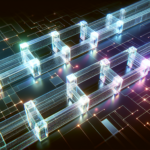The Rise of Tokenization in Real World Assets
Understanding Tokenization
Tokenization refers to the process of converting real-world assets (RWA) into digital tokens that can be managed, traded, and transferred on blockchain networks. Unlike traditional financial assets that can sometimes be cumbersome to handle, tokenized assets allow for enhanced liquidity, fractional ownership, and improved accessibility.
The Need for Tokenization
One of the main driving forces behind the rise of tokenization is the inherent inefficiencies in traditional financial systems. Transactions can be slow, costly, and disconnected. Real estate, for instance, often involves multiple intermediary steps, from brokers and notaries to banks. Tokenization simplifies this process, allowing for rapid transactions, lowering costs, and enabling anyone to invest in previously inaccessible assets.
The Role of Blockchain Technology
Blockchain serves as the backbone for tokenization. It’s a decentralized, immutable ledger that ensures transparency and security. Every transaction made is recorded, providing an auditable trail of ownership and transaction history.
Decentralization and Trust
Because blockchain operates on a decentralized model, the need for trust in a central authority is diminished. Traditional systems rely heavily on intermediaries, which can add complexity and risk. In contrast, blockchain uses cryptographic techniques to secure transactions, making it much harder for unauthorized changes to occur.
Smart Contracts: Automating Transactions
One of the pioneering features of blockchain technology is the smart contract. These self-executing contracts, where the terms are directly written into code, allow for automatic triggering of actions once predefined conditions are met. For example, in a tokenized real estate transaction, funds could be automatically released to the seller once a buyer’s deposit is confirmed, streamlining the process and reducing the need for intermediaries.
Technical Architecture of Tokenization
To fully understand the technological foundations of RWA tokenization, we need to delve into the architecture that supports it.
Token Standards
Tokens on a blockchain are created using specific standards. The Ethereum blockchain famously popularized ERC-20 and ERC-721 standards, which govern fungible and non-fungible tokens, respectively. The choice of the token standard plays a crucial role in how an asset is represented on-chain.
Fungible vs. Non-Fungible Tokens
Fungible tokens, like ERC-20 tokens, are identical and interchangeable, making them suitable for assets that can be divided or shared evenly, such as currency or shares of stock. Non-fungible tokens (NFTs), on the other hand, are unique and irreplaceable, making them ideal for individual assets like art pieces, collectibles, or even specific real estate properties.
Interoperability and Cross-Chain Solutions
Tokenized assets often require interaction with different blockchain networks. Interoperability solutions, like Polkadot or Cosmos, allow for the transfer and interaction of tokens across different blockchains, enhancing the usability and reach of tokenized RWAs. These solutions pave the way for a more cohesive ecosystem of digital assets.
The Security Dimension of Tokenization
Security is paramount in the world of digital assets. The decentralized nature of blockchain inherently provides some level of security, but additional measures must be taken to safeguard tokenized RWAs.
Private and Public Key Cryptography
Every transaction on the blockchain is secured through complex cryptographic methods. Users possess private and public keys, where the private key must remain confidential to avoid unauthorized access. This key pair serves as the user’s digital identity, guaranteeing that they can own, transfer, and manage their tokens securely.
Security Audits and Compliance
For tokenized assets to gain broader acceptance, they must also adhere to regulatory frameworks. Conducting regular security audits and ensuring compliance with regulations significantly reduces the risk of fraud and fosters trust among users and investors. Various jurisdictions impose different rules, so understanding these regulations is key in the development of a tokenized ecosystem.
Challenges and Limitations of Tokenization
While the advantages of tokenization are significant, we must also address some of the challenges it faces.
Regulatory Hurdles
Regulation is a major concern, especially since many financial systems are still grappling with how to classify and govern digital assets. Different regions have differing rules on securities, taxation, and consumer protection. Navigating this regulatory landscape can be challenging for organizations looking to issue tokenized RWAs.
Technological Barriers
For tokenization to truly thrive, the underlying technology needs to be robust and user-friendly. Current blockchain solutions face scalability issues, high transaction costs, and energy consumption worries. Innovations like layer two scaling solutions or more eco-friendly blockchain platforms are being explored to mitigate these concerns.
Real World Applications of Tokenized RWAs
The application of tokenization goes beyond theoretical discussions and has found its way into various industries.
Real Estate Tokenization
Investing in real estate traditionally requires significant capital. Tokenization allows for fractional ownership in properties, empowering more individuals to invest in real estate markets. Platforms are emerging that enable the buying and selling of tokenized real estate assets, from commercial buildings to residential apartments.
Art and Collectibles
Tokenizing artwork and collectibles provides artists with new revenue streams and ensures they receive royalties from future sales. Collectors can buy fractional shares in high-value pieces, diversifying their investment portfolios and reducing individual risk.
Supply Chain Management
In supply chains, every asset can be tokenized and traced from origin to endpoint. This transparency ensures authenticity and allows for better management of logistics, reducing fraud and counterfeiting risks.
The Future of Tokenization
The potential for the tokenization of real-world assets extends into various sectors, continually evolving with advancements in technology.
Integration with DeFi
The integration of tokenized RWAs with decentralized finance (DeFi) protocols can lead to innovative financial solutions. For instance, users could leverage their tokenized assets as collateral for obtaining loans, increasing liquidity without needing to sell their investments.
Potential for Social Impact
Tokenization can also open doors for social impact investing by allowing smaller investors to participate in projects with positive social outcomes. This financial democratization could lead to more sustainable and ethical investments.
In summary, the technological foundations of tokenization offer an intriguing glimpse into the future where real-world assets can be digitized, traded, and utilized more efficiently. As the world embraces this technological revolution, we can expect to see a massive shift in the way we perceive and interact with assets around us.








